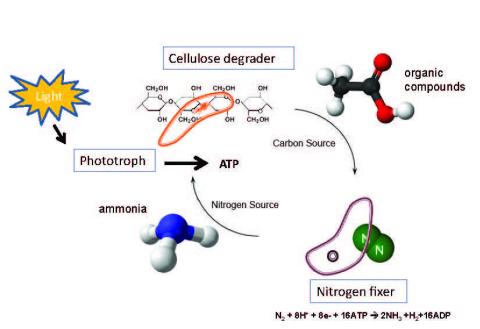Student Researchers
- Liv Kelley ‘18
- Cassandra Overney ’21
Collaborators
- Linda Amaral-Zettler, Marine Biological Laboratory
- Javier Izquierdo, Hofstra University
Research Objectives
Microbes exist in communities within the environment, and community composition and metabolic activities play important roles in nutrient cycling. We seek to understand how microbial communities work together to cycle nutrients efficiently, and the factors that influence their composition. We are currently studying a series of marine and freshwater phototrophic communities that carry out the energetically demanding processes of cellulose degradation and nitrogen fixation. Our work has revealed novel microbial types and suites of cellulase and nitrogenase enzymes involved in these nutrient cycling processes. We use methods in classical microbiology, molecular biology and genomics to gain insight into community metabolic potential and diversity. Study of these communities enables us to understand the keys to success for efficient nutrient cycling. We additionally examine how these communities change in response to perturbation, which gives us insight into community resiliency.
Impact
The microbial world is diverse, and there is increasing interest in the role of microbial communities in the environment and in human health and disease. This research contributes to understanding of microbial diversity, their roles and community dynamics.

This research project was made possible through a grant from the National Science Foundation